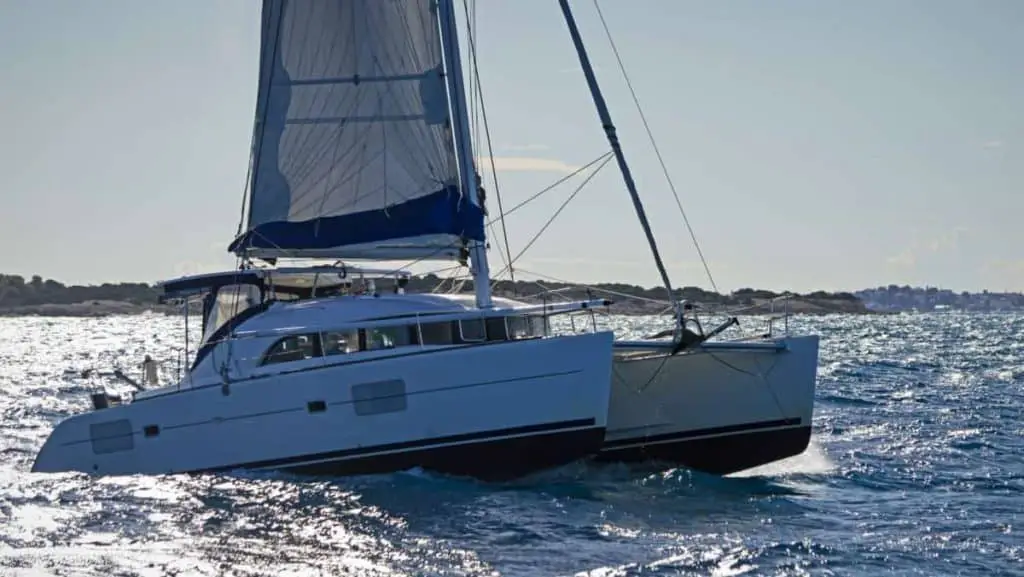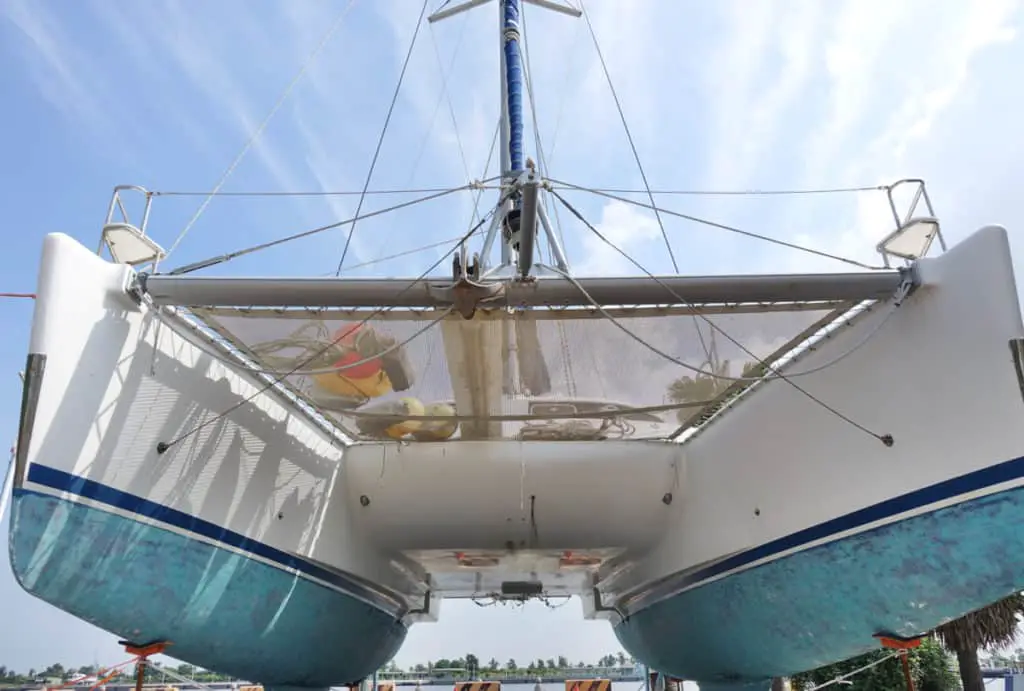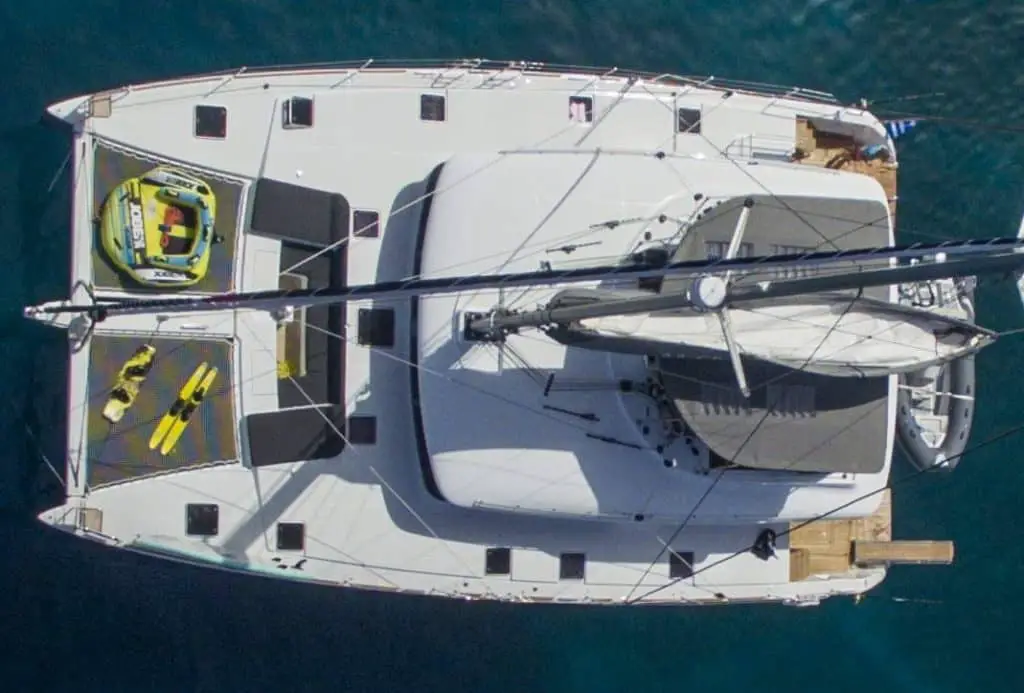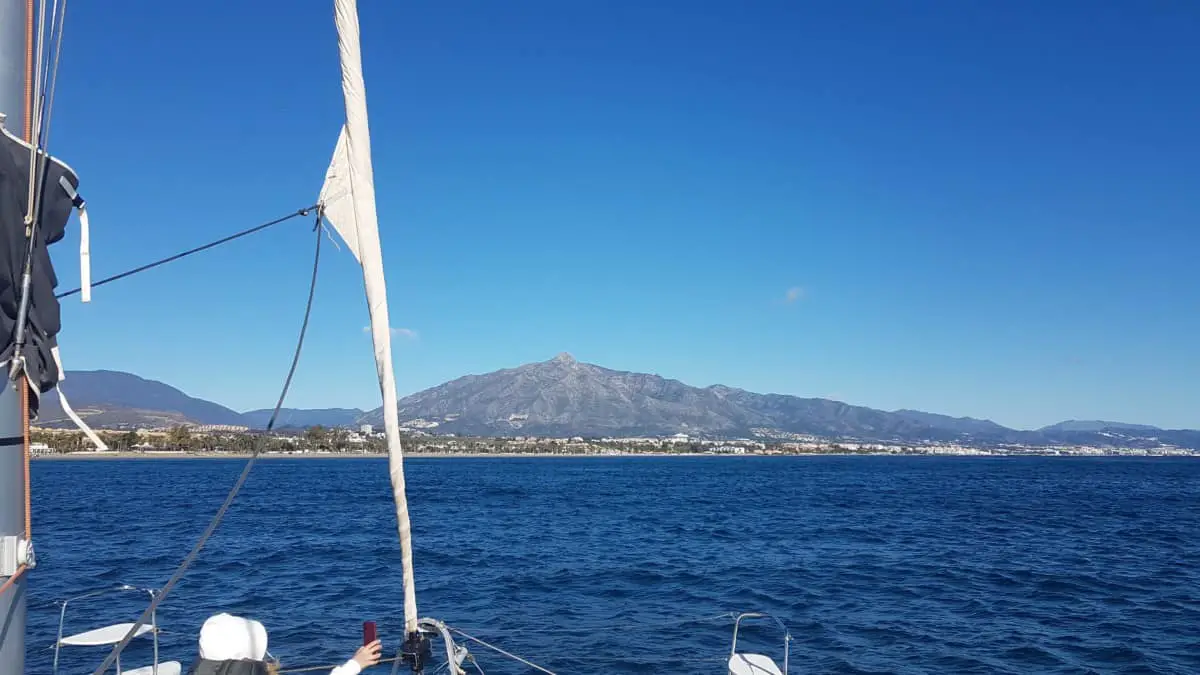As an Amazon Associate, we earn from qualifying purchases. We may also earn commissions if you purchase products from other retailers after clicking on a link from our site.
Sailing a catamaran in rough seas is a whole different story from the comfortable, leisurely cruising with your friends and family. If your cat can’t take the pressure of high waves, things can get ugly fast. So, are catamarans good for rough seas, and which are the best ones?
Some of the best catamarans for rough seas are Leopard 53, Magnum 46, Catana 53, Heliotrope 48, Lagoon 78, and 70 Sunreef. They all feature high performance to outrun heavy weather, have wide beams for added stability, low windage designs, and enough bridgedeck clearance to prevent pounding.
In this article, I’ll elaborate on the key features necessary for cats to handle rough seas and which ones are the best for taking on rough seas.

A Common Myth Busted: Catamarans Aren’t Safe
There’s a myth among sailors (not cat sailors) that catamarans can’t handle rough seas because they’re designed for cruising or anchoring in shallow waters and will easily flip over. However, cats are, in many ways, safer than monohulls since they’re more stable, maneuverable, and faster due to having two hulls and two engines.
Plus, while both catamarans and monohulls can capsize, it’s easier for the latter to flip back over. However, multi-hulls are virtually unsinkable, making them safer in case of capsizing.
In addition, due to their high performance and lightweight, they’re faster than monohulls of the same length. This feature helps the sailor outrun any bad weather conditions and navigate the vessel to a safe place.
Features a Catamaran Needs to Handle Rough Seas
Not every cat is suitable to go to heavy seas, and before purchasing any boat, you should consider the necessary features that make it safe to use for offshore cruising, what specifications accommodate your cruising needs, and the price you’re spending.
Let’s take a look at the six critical features a catamaran needs to handle rough seas (blue water able) and how these features offer enhanced safety when sailing in unstable water conditions.
Daggerboards Help Prevent Sideways Slipping
A daggerboard is a retractable vertical keel put in the hull’s central part only seen in sailing boats. Since catamarans don’t have an adequate keel area, they need daggerboards to reduce leeward drift. The bigger the daggerboards are, the better the boat’s performance.
A boat without daggerboards has reduced pointing ability, more drag, less speed, and reduced safety. That’s why a daggerboard is one of the most crucial parts of a catamaran to sail to the wind.
Daggerboards boost the cat’s performance by preventing it from slipping to leeward and lifting the boat to windward. It works like an airplane wing, allowing you to operate the boat at higher upwind angles. This feature comes in handy in rough weather and high waves.
What is the difference between daggerboards and centerboards? Read my other article!
Deep Rudders For Better Offshore Steering Control
Rudders are parts of the boats in charge of steerage and directional stability. Since they’re essential for safe steerage, catamarans have twin rudders to provide more security and reduce the pressure on the helm (autopilot).
Because catamarans have a small draft, the rudders are sometimes more vulnerable to blows and impacts, especially in rough seas close to shore, where reefs and debris can be a problem. Longer, deeper rudders are more effective because they are stronger and more stable downwind.
Best Size Catamaran For Ocean Sailing and Rough Seas
The blue water catamaran’s length plays a major role in combating high winds. A longer cat can move easier, is more maneuverable, and naturally much heavier. Strong winds can toss about the boat easily, provided that its length is in a good proportion to other dimensions.
Most cat enthusiasts believe a minimum of 40 feet (12m) is optimal for a cat to survive in rough seas. As a general rule of thumb, the best length-width proportion is 45 to 22 feet (13.72 to 6.71 meters).
In addition to safety, a bigger boat will allow for more weight because it has more space, and you can arrange your gear in a more organized way. This also makes controlling them in emergencies much easier.
What is the best size blue water catamaran for rough seas?
Enough Bridgedeck Clearance
Bridgedeck clearance refers to the space between the hulls. The bridgedeck height plays a crucial role in the cat’s ability to handle choppy seas in a comfortable and safe way. A high bridgedeck clearance gives waves enough headroom to flow between the hulls.
So, sailing in big waves causes slamming and pounding when there’s not enough bridgedeck clearance. The slamming can, in turn, lead to crew fatigue and loss of speed. Plus, it will lead to more wear and tear on the gear and equipment.

The bridgedeck clearance will be reduced when the boat is loaded heavy. So, the higher it is, the more freedom you have in loading your boat with gear, freshwater, and fuel (at least this is one aspect of the load-carrying capabilities). Although bridgedeck height is more of a comfort-related factor, the pounding under rough conditions can be stressful for both the boat and the crew.
The clearance should be between 5-6 percent of the catamaran’s LOA as a general rule of thumb. So, if the cat is 40ft (12m), the bridgedeck height should be around ~2ft (0.6m).
High Speed Get You to Safety Quicker
When at sea, you need to avoid dangerous conditions as much as possible. A high-speed catamaran helps you get out of the ugly situation faster. To avoid such bad conditions, you need to perform weather monitoring and smart routing.
A crucial factor that affects speed is displacement. Most modern cats have light displacement, leading to less hull drag and more speed.
Want to understand why catamarans are faster than monohulls I suggest you read two of my other articles:

Wide Beam Adds Stability
One of the inherent advantages of catamarans is their stability compared to monohulls. So, no matter which cat you have, you can rest assured that it’s more stable due to its multi-hull structure, no more heeling.
Catamarans go through less rocking and rolling even in heavy seas, making the crew more comfortable and helping them deal with the situation better. Fatigue and even seasickness play an important role in the crew’s ability to control the vessel in rough conditions.
Unlike monohulls, catamarans don’t have ballast or lead-filled keels. So, their stability completely relies on their wide beam and buoyancy. A heavy-weight boat goes through the waves (lead-filled keel monohull) while a light vessel will go up and over (light displacement cat).
Improve Your Seamanship Before Tackling Rough Seas
The right cat that can navigate rough seas isn’t enough. You will also need the right seamanship and skillset, once you have acquired these skills you can navigate through any offshore situation.
If you don’t have enough knowledge and skills, you shouldn’t be careful of venturing out too far. You can educate yourself by taking courses or spending as much time sailing coastal waters as possible.
Read my article on How to learn to sail in a cheap and efficient way.
In addition to knowing how to sail, you should learn about different weather conditions and how to predict the weather as it changes.
You should also know how to take care of your crew and how to place your boat in the most comfortable and safest setup in high waves; know when to slow down or speed up and how to move with the sea.
Knowing how to calm down the cat by using the right amount of sail and proper angle is another key skill you should know before setting out blue waters.
Conclusion
Unlike the myth that cats can’t handle rough seas because they’re not safe enough, these vessels have proven to be stable and fast enough for any ocean!

